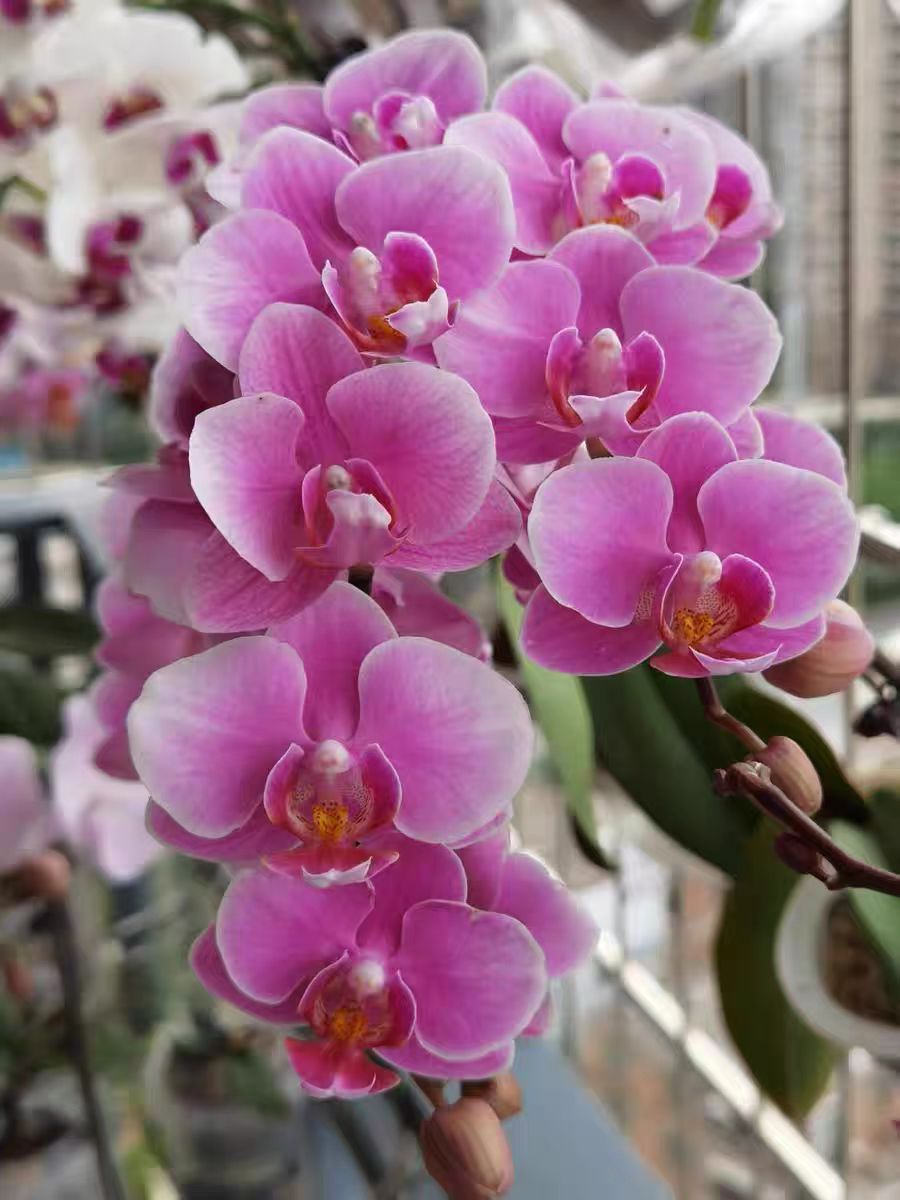During the cultivation of Phalaenopsis, fertilization is a crucial step in promoting its growth and flowering. However, if the operation is improper and the fertilizer is too concentrated, it will lead to fertilizer damage. Having an in-depth understanding of the symptoms of fertilizer damage in Phalaenopsis and the impact of overly concentrated fertilizer on the growth of the plant is essential for taking good care of Phalaenopsis.
When Phalaenopsis suffers from fertilizer damage, the most intuitive symptoms are reflected in the leaves. In the initial stage, the edges of the leaves will gradually turn yellow, showing a chlorosis phenomenon, as if they have been gently burned by a flame. As the fertilizer damage worsens, the yellow part will spread towards the inside of the leaves, forming irregular yellow patches. At the same time, brown spots will appear on the surface of the leaves. These spots will gradually expand and merge. In severe cases, the leaves will become dry, brittle, and eventually fall off. This is because the overly concentrated fertilizer causes the concentration of the soil solution around the roots to be too high, preventing plant cells from absorbing water normally. Instead, the cells lose water, which affects the normal physiological functions of the leaves.
The roots are important organs for plants to absorb nutrients and water. When Phalaenopsis suffers from fertilizer damage, the roots will also be severely damaged. The roots of healthy Phalaenopsis are white or light green, plump in texture, and shiny. However, for the roots affected by fertilizer damage, the color will gradually turn brown or black, and the root epidermis will become wrinkled and rotten, losing its original vitality. After the roots are damaged, their absorption capacity decreases significantly, and the plant cannot obtain sufficient nutrients and water, further exacerbating the plant's weakness.
The flowers and flower stems are also difficult to escape the harm of fertilizer damage. If Phalaenopsis in the flowering period suffers from fertilizer damage, the flowers will wither prematurely. The petals will lose their original bright color, become dull, and even show dry and curled phenomena. The flower stems will also become fragile and easily broken, with growth stagnating. The originally upright posture is no longer there, seriously affecting the ornamental value.
The impact of overly concentrated fertilizer on the growth of Phalaenopsis plants is comprehensive and extremely serious. It disrupts the normal physiological balance of the plant and inhibits its growth and development. Under normal circumstances, the plant's metabolism proceeds in an orderly manner. However, when the fertilizer is too concentrated, the high salt and ion concentrations will interfere with the ion balance within plant cells, hindering the normal progress of photosynthesis and respiration, and preventing the plant from effectively synthesizing and accumulating organic substances. At the same time, fertilizer damage will also damage the cell membrane structure of the roots, affecting the roots' selective absorption of mineral elements, resulting in the plant lacking certain essential nutrients, further affecting the plant's growth and development. In an environment with overly concentrated fertilizer for a long time, Phalaenopsis will not only have difficulty blooming but may even die due to the weakness of the plant.
In order to prevent Phalaenopsis from suffering from fertilizer damage, during the fertilization process, it is necessary to strictly follow the instructions for using the fertilizer and control the fertilization concentration and frequency. Adhere to the principle of "applying thin fertilizer frequently", and it is better to apply small amounts of fertilizer multiple times rather than applying an excessive amount at once. Once the symptoms of fertilizer damage in Phalaenopsis are found, immediate measures should be taken, such as watering the flower pot with a large amount of clean water to dilute the fertilizer concentration in the soil. If necessary, repot and replace the soil, prune the damaged roots, create a good growth environment for Phalaenopsis, and help it recover its health
What are the symptoms of fertilizer damage in Phalaenopsis?

Share with
Tagged in :




Leave a Reply